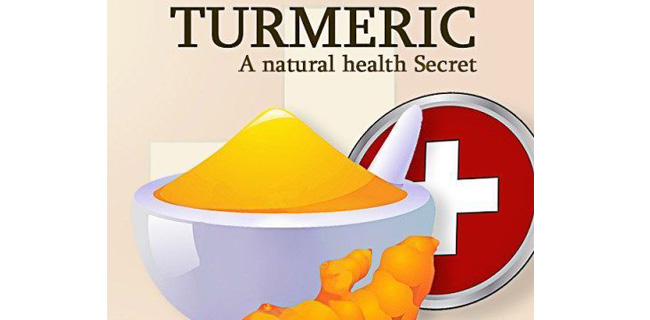Live Better
Health benefits of turmeric

I’m not much of a cook, however, I believe in strengthening and healing the body through healthy food choices. And that includes spices. There are countless spices, powders and roots that are believed to have medicinal properties. One that stands out to me above all others, though, is turmeric.
All of the research I’ve done of this bright yellow food source indicates that it is packed with properties beneficial to the body and overall health. Thousands of documented studies have been conducted testing the components of turmeric and it’s effects on the body both internally and externally. It has been noted to be a powerful anti-inflammatory, a potential cancer fighter, a source for antioxidants, good for skin health and can fight Alzheimer’s. Of course, it may affect everyone a little bit differently. One of the research websites I stumbled across was www.myhealthylivingcoach.com. The infographic pictured below, as well as in-depth information, is from that website and details the potential health benefits of turmeric.
I personally add turmeric powder to a mug of warm water every morning.
You can find the direct link to the site here.

Here’s a Recap
Turmeric is a popular spice for cooking, but it has a long history of medicinal uses, too. It is one of the most researched natural remedies available and there are numerous studies validating its healing properties. Turmeric provides a wide variety of benefits, but there are seven standouts. Once you know about these seven benefits you’ll be eager to add the spice to your diet.

Source: www.myhealthylivingcoach.com
Antioxidant
The active ingredient in turmeric is curcumin, which is known as a powerful antioxidant. This means it targets dangerous free radicals in the body and reduces the damage they are able to cause DNA and cells. When cells are healthy the body is healthy, which means turmeric offers general wellness benefits, as well as targeting specific health problems.
Anti-Inflammatory
Curcumin also has anti-inflammatory qualities. This makes it effective for fighting heart disease, osteoarthritis pain, and other health problems related to inflammation (researchers believe there are many links between inflammation and chronic illness). Curcumin is believed to reduce certain enzymes in the body known to trigger inflammation.
Heart Health
Turmeric reduces the risk of blood clots and prevents the build up of plaque in the arteries, which helps in the battle against stroke and other clot-related problems. There are also studies showing turmeric is beneficial for reducing bad cholesterol and improving good cholesterol, both of which play a role in a person’s heart health.
Slows the Progression of Alzheimer’s
Researchers studying the effects of curcumin in relation to Alzheimer’s cite the health of those living in regions that consume turmeric in high quantities. People in India aged 70 and older have a much lower rate of Alzheimer’s disease than those in the same age group in the United States. Many believe this difference is due to the high intake of Indian curries, which are made with turmeric. Further research points to turmeric’s ability to remove amyloyd plaque buildup in the brain, which is believed to put people at risk for developing the Alzheimer’s.
Natural Painkiller
An article in the July 2009 issue of Time magazine points to a study conducted at the University of Arizona. Researchers found rodents injected with a material known to cause joint pain suffered less when the injections were paired with curcumin. The article also cites anecdotal evidence singing the praises of turmeric for fighting a variety of pain that would otherwise be treated with over-the-counter pain medication.
Skin Health
Turmeric’s anti-inflammatory benefits can be beneficial when applied topically, too. It is considered an effective treatment for psoriasis and other skin disorders, and it is a natural antiseptic and can be used to treat burns and cuts.
Cancer Fighter
The jury is still out on just how effective turmeric is for fighting cancer. Some health experts point to its anti-inflammatory benefits and draw conclusions based on the link between inflammation and the development of cancer. Free radicals and cell damage are believed to be linked to cancer, too, so if turmeric is able to work as an antioxidant it has a secondary anti-cancer effect.
According to well-known holistic health practitioner, Dr. Andrew Weil, turmeric reduces the carcinogenic compound that form when meat is fried, grilled, or boiled by up to 40%. Dr. Weil also believes turmeric is effective for fighting melanoma and in halting the spread of breast cancer.
There are also preliminary studies showing turmeric could be beneficial for preventing breast, prostate, skin, and colon cancer. Since turmeric is safe and offers a variety of general heath benefits, you have nothing to lose by adding it to your diet in moderate amounts. If you plan to use concentrated doses of curcumin in your cancer treatment plan, be sure you inform your doctors to prevent any interference with other components of your treatment.
Live Better
Homeowners handbook: Navigating new HVAC refrigerants

(Family Features) Homeowners may not realize it, but one compound impacts their lives nearly every day: refrigerant. Capable of transforming from liquid to gas and back again, it absorbs and transfers heat as a key part of air conditioning and heat pump systems that keep you comfortable no matter the weather.
As part of your air conditioner or heat pump system, it helps transfer heat and humidity out of your home for cooling or draws heat from outdoor air and brings it inside for heating. However, while concerns about climate change heat up, government leaders are enacting policies that enforce greater control over the anticipated global warming potential (GWP) of refrigerants.
In fact, the Environmental Protection Agency (EPA) is limiting the GWP of refrigerants in equipment starting in 2025. At the same time, the EPA is implementing a phasedown on the supply of existing, higher GWP refrigerants.
The changes include a phasedown of high-GWP refrigerants commonly used in home air conditioning and refrigeration, introduction of alternative refrigerants with lower GWP that maintain efficiency and requiring manufacturers to comply with new standards for energy efficiency and environmental impact.
Despite these policy updates, you may not necessarily need a new air conditioner or heat pump. Here’s what homeowners need to know, courtesy of the experts at Carrier, a world leader in high-technology heating, air conditioning and refrigeration solutions:
Environmental Awareness and the Impact on Existing Home Systems
Transitioning away from high-GWP refrigerants contributes positively toward reducing your carbon footprint. These anticipated changes aim not only at reducing environmental impact but also at promoting technological advancements in heating and cooling solutions that benefit both consumers and the planet over time. If you have an existing system using older refrigerants like R-22 or R-410A, it can still be serviced; however, it’s possible repair costs may increase due to reduced availability.
Maintenance and Servicing
Regular maintenance becomes more crucial as systems age. Ensure your HVAC technician is knowledgeable about the new requirements and safely handling different types of refrigerants.
Considerations for New Purchases
When purchasing a new air conditioner or heat pump, be sure to check for energy efficiency ratings that align with the updated regulations and look for models using low-GWP refrigerants. For example, Puron Advance from Carrier will replace existing refrigerants in all its residential ducted and ductless and light commercial products. This innovative refrigerant, also known as R-454B, not only meets the EPA’s anticipated GWP limits for refrigerants but exceeds the new requirements with a GWP of 466, a 75% reduction compared to R-410A.
Incentives and Rebates
If you’re shopping for a new air conditioner or heat pump, keep an eye out for government incentives or rebates aimed at encouraging homeowners to upgrade their systems in compliance with new standards.
Consult Professionals
Owning a home is a lot of work on its own, and EPA regulations on your cooling and heating systems may be the furthest thing from your mind. If you believe you’re due for service or a new system, engage HVAC professionals – like the trusted experts at Carrier – who are up to date on regulatory changes. Always check local regulations for specific details applicable in your area since policies can vary by region beyond federal guidelines.
To find more information on the changes or connect with an HVAC professional, visit Carrier.com/Residential.
SOURCE:
Carrier
Live Better
5 things funeral directors wish everyone knew

(Family Features) Most people don’t want to think about death – let alone talk about it. When the time comes, families often find themselves overwhelmed, not only by grief but by the many decisions that need to be made quickly.
Funeral directors witness this every day. They see the stress and confusion that can come when there is no plan in place and the peace of mind that comes with thoughtful preparation.
After consulting funeral directors nationwide, the National Funeral Directors Association (NFDA) uncovered five things they wish families knew before a death occurs.
- It’s Never Too Early to Start Planning
While everyone knows death and taxes are inevitable, conversations about death are often avoided.
Simply documenting your wishes and discussing your preferences with your family can alleviate the difficult decisions your loved ones will have to make in the future. Speak with a funeral director to explore the many options for planning a meaningful funeral.
- Legal and Financial Details Can Cause Unexpected Issues
Families often don’t realize power of attorney ends at death, meaning a designated person can no longer make decisions or access bank accounts once an individual dies.
To avoid complications, consider adding a trusted loved one to your bank account and ensure life insurance beneficiaries are up to date. Too often, deceased individuals leave minor children, deceased spouses or former partners as beneficiaries, leading to legal and financial challenges.
- Final Wishes Shouldn’t Be In Your Will
Many people believe the best place to document their final wishes is in their will. However, wills are often not read until after funeral services take place, making them an unreliable way to communicate last requests. Instead, discuss and document your wishes with family members or a trusted funeral professional who can keep your wishes on file until there is a need.
- There Are a Variety of Memorialization Options
End-of-life planning offers more choices than many realize. While burial remains a common preference, cremation is an increasingly popular choice and can even include a viewing and funeral service. Additionally, eco-friendly options, such as alkaline hydrolysis, natural burial and natural organic reduction are becoming more widely available for those seeking green memorialization. In fact, according to NFDA’s 2024 Consumer Awareness and Preferences Study, 68% of respondents expressed interest in green funeral options.
Exploring these possibilities with a funeral professional can help ensure your final arrangements reflect your values, traditions and personal wishes.
- Funeral Directors Don’t Just Manage Funerals – They’re Trusted Guides In Honoring Life
Funeral directors play a vital role in helping families create meaningful services that reflect their loved one’s life, values and traditions. Whether planning ahead or facing a recent loss, funeral professionals provide expertise, compassionate care and personalized guidance during one of life’s most difficult moments.
Choosing the right funeral director is an important decision and finding someone who understands your needs can make all the difference in honoring your loved one in a personal and meaningful way.
Start the conversation today by talking about end-of-life planning. It isn’t easy, but it’s one of the most important conversations you can have with your loved ones. A little planning today can make a world of difference tomorrow.
Use comprehensive resources like RememberingALife.com, which is designed to guide families through every stage of the journey, including planning, funeral options and grief resources. The site offers valuable tools and support, such as the “Find a Funeral Home” tool to connect families with compassionate, local funeral directors and much more.
Photo courtesy of Shutterstock
Live Better
Gear up for grilling season

(Family Features) As the days get longer and the temperatures rise, it’s time to fire up the grill and elevate your outdoor cooking game. Whether you’re a seasoned grill master or just starting out, success comes down to three essentials: quality ingredients, the right seasonings and reliable equipment that gives you full control over heat and timing.
If you’re ready to turn up the heat this season, explore high-performance grilling solutions from Nexgrill – built to match every cooking style and skill level. From backyard barbecues to weeknight dinners under the open sky, its lineup is designed to help you serve up unforgettable flavors all season long. Visit nexgrill.com to learn more and get inspired.

Unlock a New Level of Outdoor Cooking Versatility
Transform your backyard into a chef-inspired kitchen with the Gourmet Pro 6-Burner Stainless Steel Gas Grill featuring the Griddle Max Cooking System. Designed to go beyond traditional grilling, this powerhouse lets you grill, saute, griddle and smoke all at once or on demand. The innovative system makes it easy to achieve restaurant-quality results, delivering unmatched versatility for any meal. Built with stainless steel burners, angled flame tamers and porcelain-coated cast-iron cooking grids, it ensures consistent heat and fewer flare-ups. With 811 square inches of cooking space, six main burners and a high-heat searing side burner, you’ll get 75,000 BTU of total cooking power.

Take on Breakfast, Lunch and Dinner
From sizzling fajitas at your backyard bash to early-morning pancakes before your next adventure, the Daytona 4-Burner Propane Gas Griddle delivers the heat, flavor and performance you need. Designed for versatility, this powerhouse features a 792-square-inch cooktop and four stainless steel burners, giving you the space and control to cook multiple dishes at once. Built-in convenience comes standard with dual side shelves, a lower storage rack to keep tools within reach and a removable grease cup for quick and easy cleanup. When it’s time to pack it in, a heavy-duty lid protects your cooking surface.

From Kitchen to Patio, It Goes Where You Go
Grilling isn’t just for the backyard. When weather or space keeps you inside, the Fuse 22-inch Electric Griddle delivers bold, flame-free cooking anywhere there’s an outlet. Ultralightweight and easy to transport, it’s built for seamless indoor-outdoor use. With 308 square inches of edge-to-edge heat, a durable nonstick surface and digital temperature control, this electric flattop offers precision and power. A hinged lid with a built-in viewing window locks in heat and flavor so you can cook efficiently. From weekday breakfasts in the kitchen to weekend feasts on the patio, it can be your all-access pass to delicious, flexible cooking – wherever life takes you.
SOURCE:
Nexgrill
-

 NEWS2 years ago
NEWS2 years ago2 hurt, 1 jailed after shooting incident north of Nocona
-

 NEWS2 years ago
NEWS2 years agoSuspect indicted, jailed in Tia Hutson murder
-

 NEWS2 years ago
NEWS2 years agoSO investigating possible murder/suicide
-

 NEWS2 years ago
NEWS2 years agoWreck takes the life of BHS teen, 16
-

 NEWS2 years ago
NEWS2 years agoMurder unsolved – 1 year later Tia Hutson’s family angry, frustrated with no arrest
-

 NEWS2 years ago
NEWS2 years agoSheriff’s office called out to infant’s death
-

 NEWS2 years ago
NEWS2 years agoBowie Police face three-hour standoff after possible domestic fight
-

 NEWS2 years ago
NEWS2 years agoDriver stopped by a man running into the street, robbed at knifepoint






